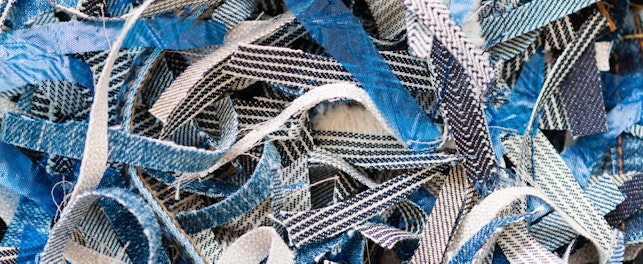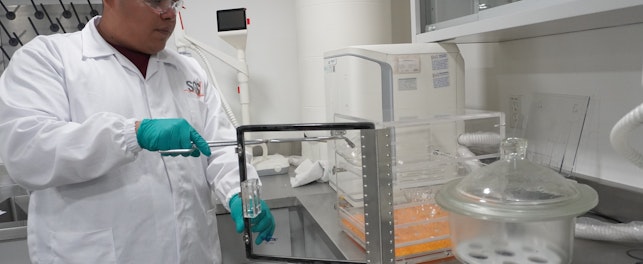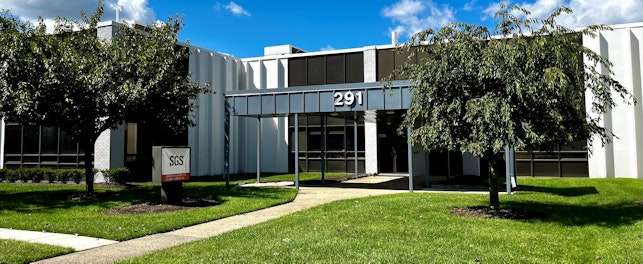Flushability is a hot topic in the nonwoven wipe industry. Consumers love the convenience and feeling of freshness using wipes gives them but there are growing concerns over which products can be safely flushed. Are you sure your wipes are safe to flush?
Global problem
The UK Consumer Council for Water estimates English and Welsh water companies deal with 300,000 blockages caused by fat congealing around non-flushable items, commonly called fatbergs, every year. 1
This is a global problem, and the impacts can go beyond blockages. For example, a fatberg in Baltimore, Maryland, caused the release of 4.5 million liters of sewerage into the local environment. 2 Fatbergs also take time and financial resources to remove – it is estimated a 130-tonne fatberg in Whitechapel, London, took two months of continuous work to clear. 3
What is in a Fatberg?
Fatbergs are caused by the accumulation of ‘unflushable’ items, such as oil, grease, hair, sanitary products and non-flushable wet wipes. A 2016 forensic evaluation conducted at New York City’s Wards Island Wastewater Treatment Facility found the system contained:
- 38% – non-flushable baby wipes
- 34% – non-flushable paper towels
- 19% – non-flushable household wipes
- 7% – non-flushable feminine hygiene products
- 2% – flushable wipes
- Toilet paper not counted 4
In large part, the problem stems from confusion among consumers regarding which products are safe to flush. Unlike toilet paper, wipes do not readily dissolve and so, if they do not meet appropriate flushability standards, there is an increased chance they will contribute towards a blockage.
This problem has been growing over the last ten years, but there was a significant acceleration during the COVID-19 pandemic as people actively sought to be more hygienic. If consumers are unclear about whether a wipe can or cannot be flushed, then there is an increased chance they will make a mistake.
Legal pushback
In January 2021, the Charleston Water System, South Carolina, filed a lawsuit against multiple companies involved in the manufacture and sale of wipes. Their goal was to ensure wipes labeled ‘flushable’ were actually flushable and would ‘disperse’ in the sewerage system in a time and manner that did not cause blockages or additional maintenance problems. The lawsuit also included requirements that manufacturers provide better notice to consumers that non-flushable wipes are truly non-flushable.5 In April 2021, they reached a settlement with one of the defendants, which stated that wipes labeled ‘flushable’ must meet the wastewater industry’s standards by May 2022.6
Several initiatives exist to help industry and consumers disseminate and understand what products can be safely flushed, such as the Responsible Flushing Alliance. They recognize the issues surrounding flushability and seek to find real solutions by working in collaboration with manufacturers and the wastewater industry. Through their ‘Do Not Flush’ symbol and adherence to a code of practice for wipe labeling, they are working to bring clarity to the market.7
The key to combating clogs must be greater better education for consumers about which products can be safely flushed – flushable wipes, etc. – and which cannot – cooking oil, baby wipes, etc. To assist consumers, markets also need to make it easier to identify which products can and cannot be flushed. This can only be done if the wipes are properly tested by a trusted service provider.
Testing flushability
In June 2018, International Nonwovens and Disposables Association (INDA) and European Disposables and Nonwovens Association (EDANA) published the fourth edition of their Guidelines for Assessing the Flushability of Disposable Nonwoven Products (GD4). They have also released a code of practice for labeling that states non-flushable wipes must display the ‘Do Not Flush’ symbol on packaging, and it must be clear at the point of purchase and visible every time a wipe is removed.
Around the world, other markets have adopted similar standards:
- International Wastewater Services Flushability Group (IWSFG) PAS3 – June 2018 (updated 2020)
- Australia/New Zealand Standard AS/NZS 5328:2022 – May 2022
These standards are often based on GD4 but contain stringent requirements. For example, ISWFG modified the slosh box disintegration test to make it more difficult to pass.
Differences include:
- Pre-conditioning step – flush in toilet and hold for 30 minutes in the drainpipe instead of rinse off lotion
- Force – four liters of water at 18 rpm instead of two liters at 26 rpm
- Time – halved to 30 minutes, with rinse time also halved to 60 seconds
- Pass criteria – 80% must pass through a 25 mm sieve instead of 60% passing through a 12.5 mm sieve
SGS solution
We offer a comprehensive range of testing services to help manufacturers develop safe and flushable products in compliance with increasingly stringent market requirements. We are the only ISO/IEC 17025 accredited laboratory covering nonwoven flushability testing against the GD4, IWSFG and AS/NZS 5328:2022 standards, with solutions covering:
- Toilet bowl and drainline clearance
- Slosh box disintegration
- Household sewage pump
- Column settling
- Aerobic biodisintegration
- Anaerobic biodisintegration
- Municipal pump
Learn more about SGS Integrated Paper Services (IPS) flushability testing services
Enjoyed this article?
Find more news and updates in our Consumer Compact newsletter >
Delivered direct to your inbox
Subscribe to Consumer Compact >
References
2 Baltimore's "Fatberg" Plug Causes Sewer Overflow, Goes Viral
3 'Victory declared' over 130 tonne Whitechapel fatberg
4 Forensic Evaluation of Non-Dispersables, New York City Law Department
5 Wiped Out: Settlement Reached in Kimberly-Clark Lawsuit
© SGS Société Générale de Surveillance SA.




